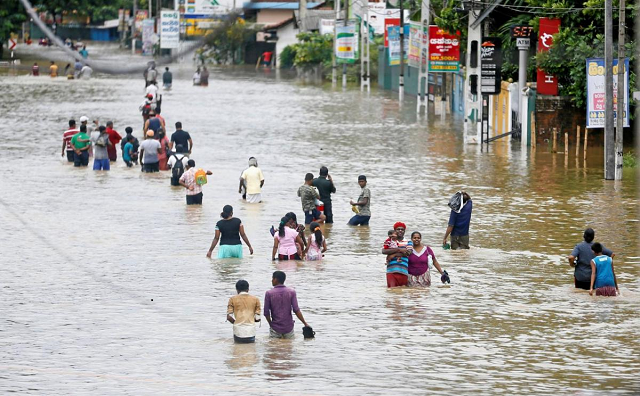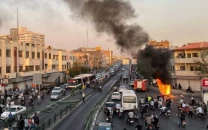Heavy rains, landslides kill five in Sri Lanka
Heavy rains and intermittent droughts have hit tea, the country’s main export crop

Flooding has forced the evacuation of people in areas where several rivers are overflowing
PHOTO: REUTERS
Lightning killed three people, a landslide a fourth, and the fifth death was the result of a fallen tree, said officials at the country’s Disaster Management Centre.
The centre’s spokesperson, Pradeep Kodippili, said flooding has forced the evacuation of people in areas where several rivers are overflowing, while four districts are on “red alert” for possible landslides.
“People in those four districts have been cautioned to be vigilant,” Kodippili told Reuters.
The army has sent more than 100 soldiers with more than 25 boats to tackle the emergency, its spokesperson, Sumith Atapattu, told Reuters.
Sri Lanka lifts nationwide state of emergency
May kicks off the monsoon season in Sri Lanka’s south, usually the region’s wettest time of year, running until September. From November to February, the northwest monsoon also brings the island heavy rain.
Heavy rains and intermittent droughts have hit tea, the country’s main export crop, which brings in earnings of more than $1 billion. Tea output rose last year for the first time in four years.
Pakistan, Sri Lanka vow to work together for regional peace
However, the weather this year has not been harsh enough to affect the stockmarket and companies, brokers said, although firms in the plantation industry could be hit.
Rioters clash with Police in curfew-bound Central Sri Lanka
Growth in Sri Lanka hit a 16-year low of 3.1 percent in 2017, mainly due to a flood that killed more than 100 people and a lengthy drought in some areas.



















COMMENTS
Comments are moderated and generally will be posted if they are on-topic and not abusive.
For more information, please see our Comments FAQ